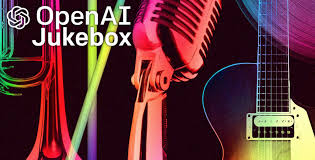Ever wondered how to create AI-generated music that actually sounds like real vocals and instruments? That’s where OpenAI Jukebox comes in. It’s not just another loop-based music generator—this tool is capable of synthesizing realistic singing voices and genre-specific music, trained on real songs and artist styles.
But here’s the catch: OpenAI Jukebox is incredibly powerful—and incredibly complex to use. It's not plug-and-play like Soundraw or Suno. So if you're searching for how to use OpenAI Jukebox, this detailed guide will walk you through everything: from how it works, what you need to run it, how to generate music, and what to expect in 2025.

Why Should You Care About OpenAI Jukebox?
OpenAI Jukebox is one of the only publicly released models that generates full-length songs with both vocals and instrumentation, trained on thousands of licensed audio samples. It's not just beat loops—it understands genre, lyrics, artist style, and can generate music in raw audio format.
Use cases include:
Creating AI covers of famous artists (for research/non-commercial use)
Experimenting with genre blending (e.g., classical trap or jazz EDM)
Generating new compositions based on custom lyrics
Studying how AI understands harmony, voice, and rhythm
How OpenAI Jukebox Works Behind the Scenes
Before diving into how to use it, let’s quickly explain the architecture, because it impacts how you run it.
Model Structure:
Jukebox uses a VQ-VAE (vector quantized variational autoencoder) combined with autoregressive transformers to encode and decode music data. Essentially, it breaks music into compressed tokens and reconstructs it into audio.Training Dataset:
Over 1.2 million songs across genres and decades were used, licensed from real labels. Artists range from Ella Fitzgerald to Kanye West (for research).Output Format:
Jukebox doesn’t generate MIDI or sheet music. It outputs raw audio, typically 44.1kHz WAV files.
What You Need Before Using OpenAI Jukebox
1. Hardware Requirements
Running OpenAI Jukebox locally is resource-intensive. To generate even a few seconds of music, you’ll need:
At least one NVIDIA Tesla V100 or A100 GPU
Minimum 12–16 GB GPU VRAM
Docker, PyTorch, and Python 3.7+
At least 100GB of disk space for model weights
A solid internet connection to clone repositories and download weights
Tip: Most users run Jukebox on Google Colab Pro, Lambda Labs, or RunPod to avoid buying expensive GPUs.
2. Software Setup
Clone the official GitHub repository:
git clone https://github.com/openai/jukebox.git
cd jukebox
Install dependencies:
pip install -r requirements.txt
Then, download the model weights:
bash python jukebox/download.py --model=1b_lyrics
OpenAI released three model sizes:
1b,1b_lyrics, and5b. Most people use1b_lyricsfor lyric-conditioned music generation.
How to Use OpenAI Jukebox Step-by-Step
Step 1: Prepare Your Input
You can either:
Let the AI generate random music
Or guide it with lyrics, artist name, genre, and custom prompts
Example config:
python
prime_dict = {
'artist': 'Elvis Presley',
'genre': 'rock',
'lyrics': 'I walk this empty street on the boulevard of broken dreams...',
}Lyrics should be 5–20 lines, short and structured.
Step 2: Generate Tokens
Run this script to encode your input:
python python jukebox/sample.py --model=1b_lyrics --name=elvis_ai --levels=3 --mode=primed
This primes the model with your chosen style and lyrics, generating tokens at three levels of audio abstraction. Each step takes several hours depending on your GPU.
Step 3: Decode into Raw Audio
Once token generation is done, decode the tokens into a playable audio file:
python python jukebox/render.py --name=elvis_ai
This outputs a .wav file into your output directory.
Tip: Use audio editing tools like Audacity or Reaper to enhance, crop, or loop your AI song.
Step 4: Post-Processing and Sharing
While Jukebox generates music with vocals, the voice often sounds distorted or robotic, especially for longer compositions. You may want to:
Apply audio cleanup with Izotope RX or Adobe Podcast Enhance
Layer additional instruments using Ableton Live or FL Studio
Credit OpenAI and use non-commercially, unless you’re remixing public domain
What Can You Realistically Do With OpenAI Jukebox?
| Application | Use Case | Commercial Use? |
|---|---|---|
| AI covers | Create fan covers in artist’s style | ? (Copyrighted) |
| New songs | Compose from original lyrics | ? if no artist mimicry |
| Genre mashups | Merge pop & jazz, hip-hop & folk | ? |
| Music research | Study AI’s music behavior | ? |
| Soundtrack demos | Draft ideas for scoring | ? non-public |
Limitations of OpenAI Jukebox
Despite its innovation, Jukebox has several key limitations:
No real-time editing: You can’t tweak chords or melody mid-song.
Very slow generation: Even on Colab Pro, generating 30 seconds of audio can take 8–10 hours.
No UI: It’s all code-based—no drag-and-drop like Udio or AIVA.
Model is frozen: OpenAI has not updated Jukebox since 2020. It’s still usable, but not under active development.
Alternatives to OpenAI Jukebox in 2025
| Tool | Supports Vocals | UI-Based | Real-Time Generation | Commercial Use |
|---|---|---|---|---|
| Suno AI | ? | ? | ? | ? |
| Udio AI | ? | ? | ? | ? |
| AIVA | ? | ? | ? | ? |
| Soundraw | ? | ? | ? | ? |
| OpenAI Jukebox | ? | ? | ? | ? (unless non-derivative work) |
Conclusion: Should You Use OpenAI Jukebox?
OpenAI Jukebox is one of the most technically advanced AI music generators ever released—but it’s not for beginners. If you’re a developer, audio researcher, or experimental artist, it’s worth diving into. But if you just want to generate great-sounding music fast, you’re better off with platforms like Suno, Udio, or AIVA.
So, should you use OpenAI Jukebox in 2025?
? Yes — if you love tinkering, have GPU access, and want to create complex AI vocals.
? No — if you want instant results or aren’t comfortable with code and CLI tools.
FAQs
Q1: Is OpenAI Jukebox free to use?
Yes, it's open source and free to use. But you’ll need to pay for GPU access or use services like Google Colab Pro.
Q2: Can I use OpenAI Jukebox music commercially?
Only if you're not mimicking copyrighted artists or lyrics. Otherwise, it’s for research and non-commercial projects.
Q3: Does OpenAI Jukebox support real-time music creation?
No. Music generation takes several hours, and you can't edit on the fly.
Q4: Can I run Jukebox on my local PC without a GPU?
Technically yes, but practically no. It would take days to generate seconds of music without a good GPU.
Q5: Are there updates planned for Jukebox?
No updates have been announced. It remains in a research state as of 2025.
Learn more about AI MUSIC








